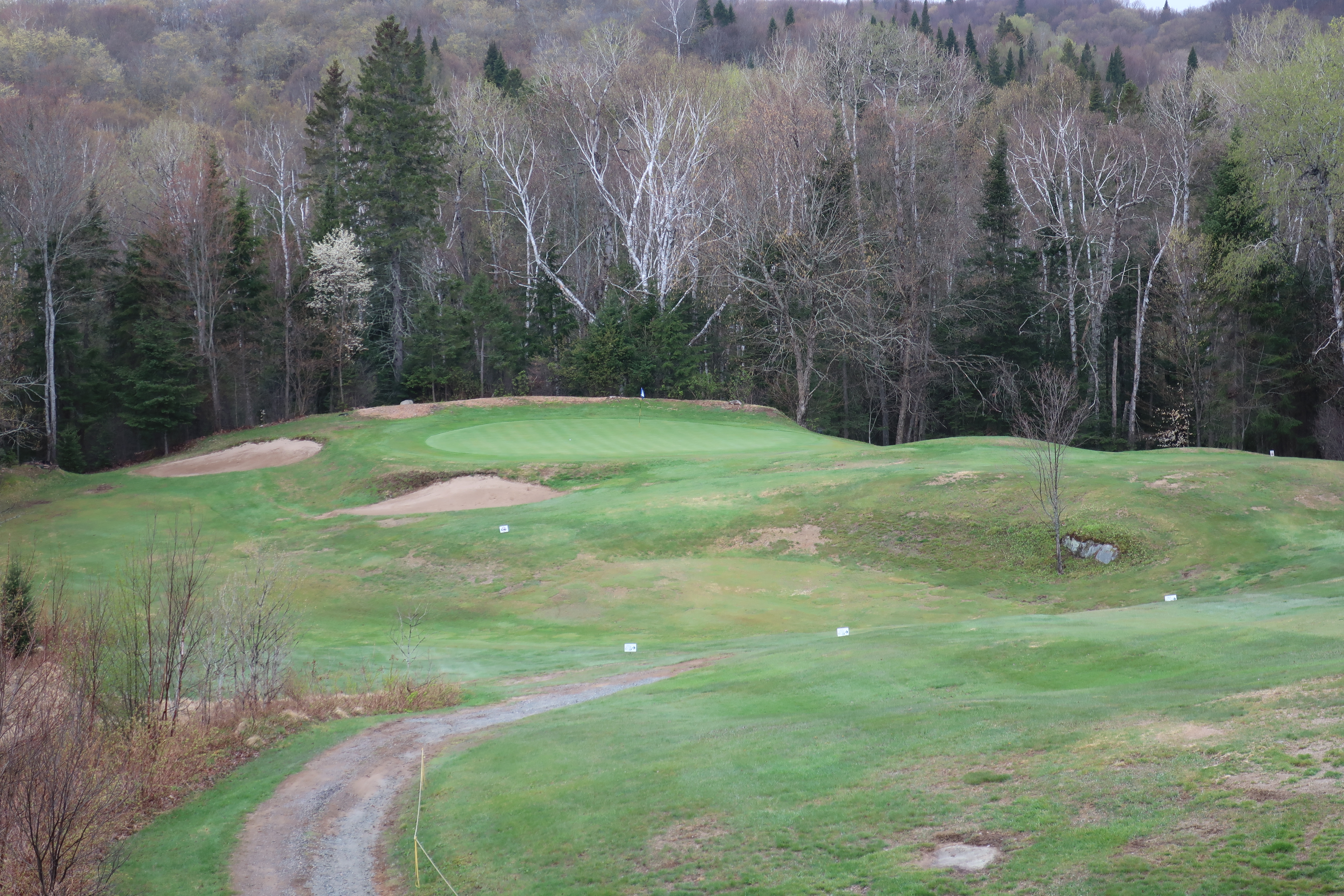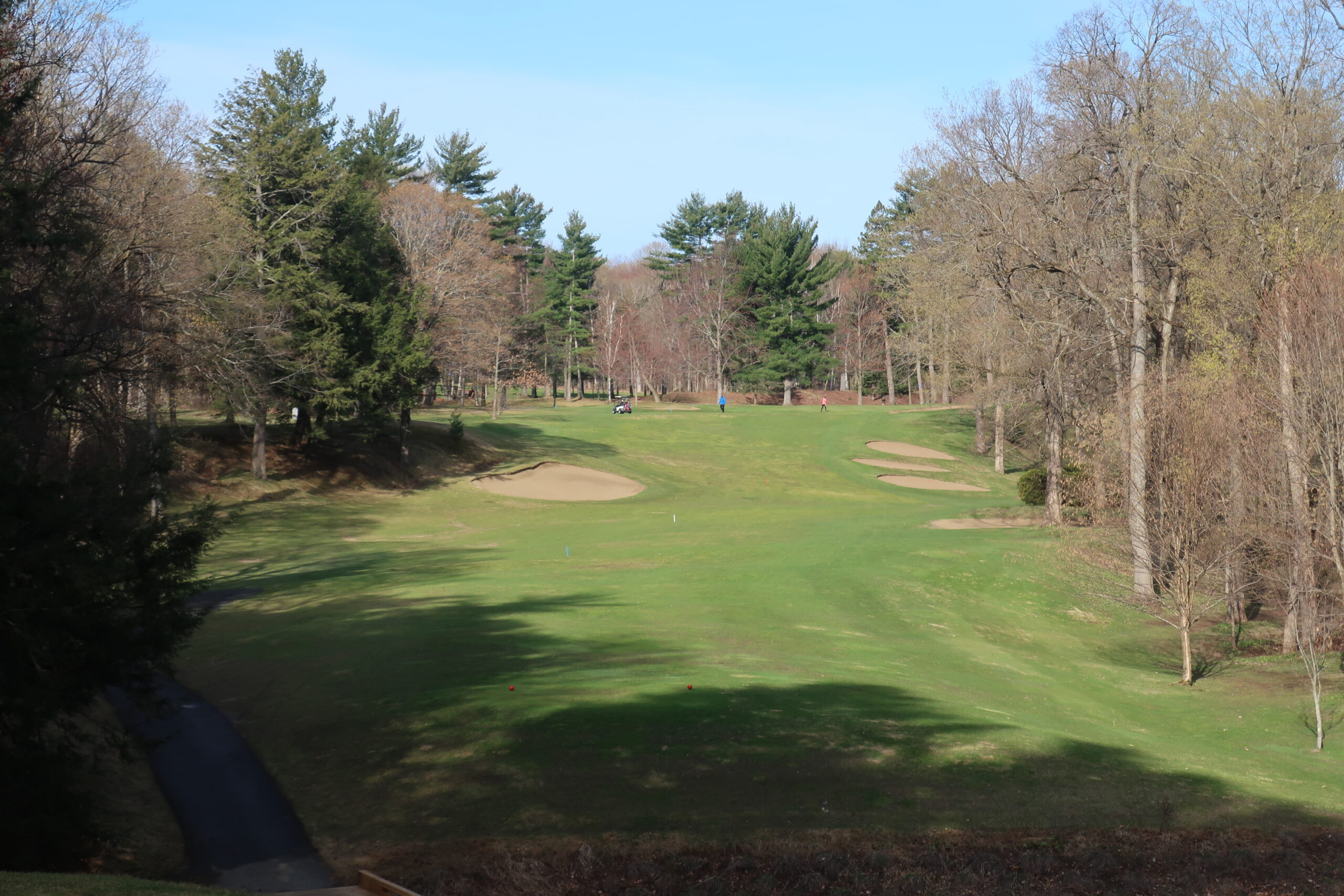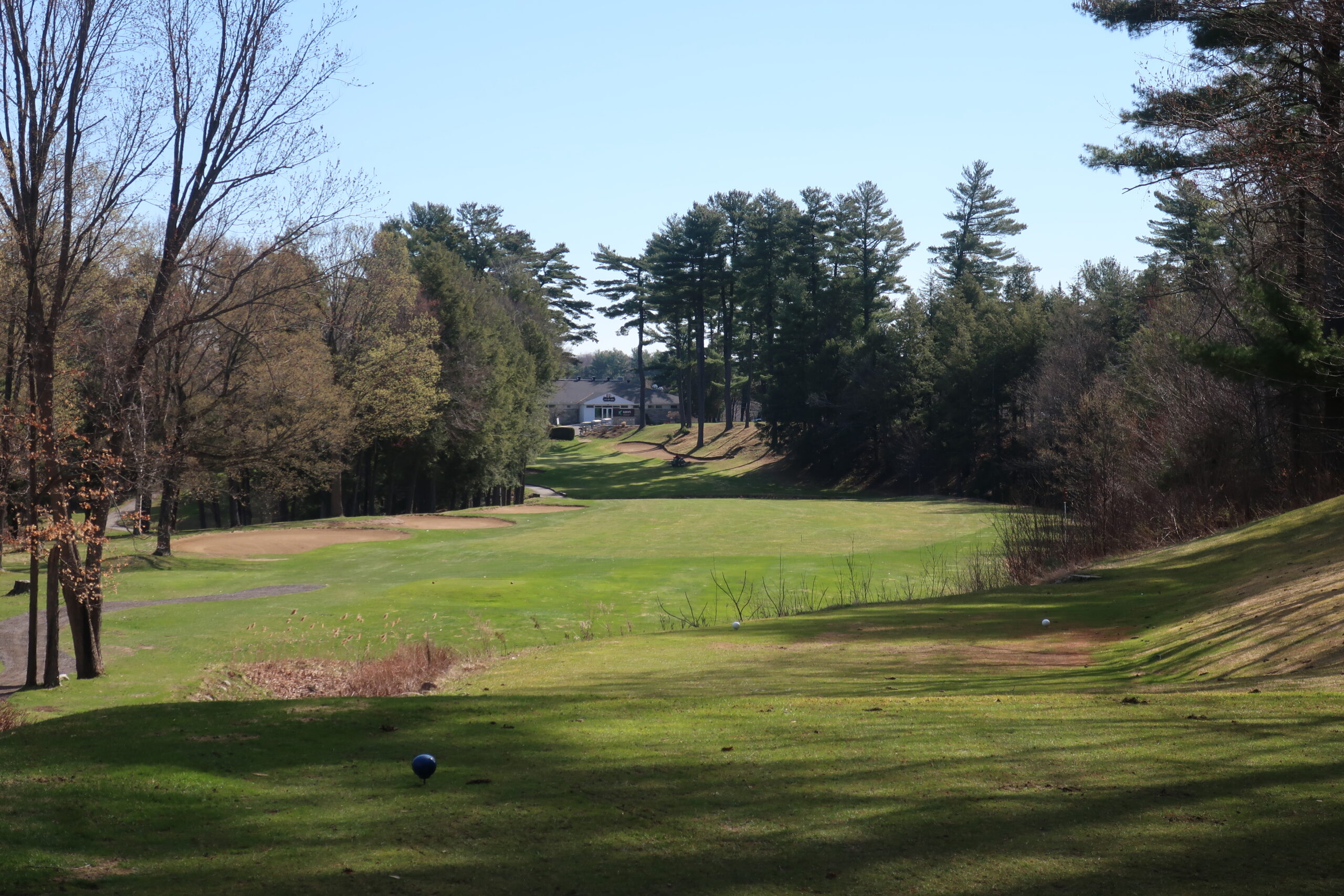An apocalyptic hellscape rolls into Ontario for golfers in April 2021. Not at the hands of weather or a late snow delaying golf, nor in some crazy Last Of Us zombie event (honestly, this might be debatable at this point). Instead, Doug Ford closed golf as part of the 2021 Lockdown. Ford rambles on about his buddies having “a couple of pops” after the round of golf, electing this as his reasoning for shutting down an outdoor sport with a maximum of four people on hundreds of yards of grass, already socially distanced.
In Québec, however, golf was open even with some rather strange curfew laws and other random, wild restrictions. We were told not to travel between provinces unless exempt, but I went anyway. For the five weeks golf was closed in Ontario, I went to Québec for games on my days off from work.
Mid-April is no time for Mount Bruno or Royal Montreal, and truthfully, any private club is stretching your luck. COVID-19 left us all locked in our homes, though, so I used the time to research and learn more about golf’s history over the winter. As a result, I came out the other end of a seemingly never ending tunnel of archives, online libraries, and perhaps texting those I know would know some answers enriched. Golf in Québec was once a juggernaut in not only Canada, but North America. During the Golden Age, a handful of golf’s greatest architects ever built or renovated golf courses in Québec, including A.W. Tillinghast (2), Stanley Thompson (10), Herbert Strong (5), Donald Ross (at least 2), C.H. Alison (3, maybe 4?), Walter Travis (1), H.S. Colt (at least 2), Tom Bendelow (1+), Willie Dunn (1), and Willie Park Jr. (10+). That is a lot of heavy-hitters, and that’s not including local architects like Albert Murray doing their thing at the same time.

One of those courses I read about was Club de Golf Grand-Mére, a shocking C.H. Alison and Walter Travis combo design in Shawinigan, Québec. Brad Faller, a friend of mine, put me on to Anthony Gholz Colt & Alison In North America, and the rest is history. My first trip was to Grand-Mére, some seven hours door to door from west Toronto.
Shawinigan is about 40 minutes north of Trois-Riveries, where I stayed, and picked up Ki-8-Eb as my second golf course (pronounced “Que-E-Teb”). As a native English speaker, this is not exactly friendly territory for a fella who cannot piece together a single sentence of French. My day begins at Tim Hortons with a “plain bagel, toasted, with cream cheese” and an ice coffee that somehow ends up as an everything bagel, not toasted, with strawberry jam and butter, as well as a 7UP to drink. I guess it’s fuel, but at 6:30AM, not my preferred meal. I needed something for my 36 hole day after driving 7 hours the day before, and the literal fear of being surrounded by people who spoke a language, but not my language, is a strong motivator. Off we go.
The morning is spent at Ki-8-Eb, a Stanley Thompson and Albert Murray combination, where they each contributed nine holes. This is no showstopper, but it is surprisingly solid with some fun stuff to find for those looking for classic architecture. Starting on the Thompson nine, the golf course plunges into the Rivière Saint-Maurice river valley before hugging the windy water feature on the par 5, 5th.

The ground is rumpled and uneven, winter kill is prevalent, but it is pretty good for mid-April and much better than I was expecting for rural Québec at the beginning of golf season. It lacks the usual Thompson drama on the one-shot holes, similarly as Capilano; good holes, but not the standouts like they are at Banff Springs or St. George’s. Instead, the par 5’s are surprisingly great, traversing some pretty awesome terrain.
Like Thompson’s nine, Murray’s version also begins with a bang for different reasons. Instead of a massive drop to the fairway below, Murray’s nine opens with a classy hole strategy. The heavily-tilted fairway has four bunkers: one on the high side that must be carried for the ideal line, and the three on the low side to catch wayward balls from rolling down the embankment. Thompson’s opening hole is far more dramatic, but Murray’s is textbook great architecture. It is a bit of a trailer to the rest of the golf course. In fact, Murray almost outshines Thompson on the same property, with most of Albert’s course sitting up the hill, while Thompson’s tumbles down below. The 18th is dramatic and ends on a high note on a rare collaboration between two of Canada’s great Golden Age golf architects.
- The 10th at Ki-8-Eb
- The closing hole, Albert Murray’s 9th
The afternoon is spent at Grand-Mére, a course with steady publicity on this site (here & here, for example). I had researched the course and set my sights on a visit. It lived up to the reputation, and more. Untapped Golden Age potential just waiting to be a top 25 golf course in Canada (it already is for me).
From that point, Québec had me shook. If there was a Walter Travis & C.H. Alison design hidden from the world just laying there, what else could I find? I was invested, ready to recapture that feeling of being the first person I knew to play it, which still shocks me to this day. This led to me hunting the next untapped Golden Age design, hoping it might be half as good as Grand-Mére is.
I went back to Québec the very next weekend, with fears of a potential stop at the provincial border asking me my reason for visiting (it never happened, but they threatened it). It wasn’t Golden Age, nor some hidden gem, but I had never been to Mont-Tremblant and Le Diable seemed worthy of a stop. I added Sainte-Agathe, a nine hole golf course in between Tremblant and Montreal, that Willie Park Jr. advertised as his own. There was skepticism prior to my visit: I had done my research with Grand-Mére, but not Sainte-Agathe. I knew Willie Park Jr. spent a lot of time in Québec, and A.W. Tillinghast’s Anglo-American Club (no longer exists) wasn’t that far away, so I assumed it would be all good.
What I found remains the rowdiest layout I have ever seen, heaving up and down the Québécois mountainside. The 1st launches down, while the 2nd climbs.

Unlike the seaside links of the British Isles, there is no sand here. Instead, contours are derived from the rock below, producing rather unpredictable and, at times, scattered undulations. The 2nd is a rather insane hole, throwing itself up the mountain to a green tucked behind a contour ridge. If it seems difficult to follow up such a wild golf hole, it would be for most, but Park Jr.’s routing identifies the most insane redan I’ve seen in Canada. Tucked into a shelf, with balls long and right tumbling off what feels like the edge of the world, and balls short and left in absolute purgatory, it is a very “do or die” feel, with room right to work the ball in. It is a bit of a hike from Toronto, but this made the drive worth it alone, and it was only the 3rd hole.

The rest of the golf course is noticeably insane as well, but nothing quite as architecturally significant as the 2nd or 3rd. Nevertheless, it fixed my craving for some golden age potential; short-lived, of course. It only further proved my point of the potential of golf in Canada’s only French province and made me more curious.
My next two weekends were a bit more conventional, as May brought sunshine and prime growing days. Dunany, a nine hole golf course and Lachute, a rather subdued Thompson in between Montreal and Ottawa paired nicely with Beaconsfield and Kanawaki, two of Montreal’s private clubs. We sneaked in Braeside, a nine hole golf course with possible involvement from Willie Dunn and Willie Park Jr., a true blast from the past.
The final trip in a four-week stretch to Québec was also the furthest. At the time, Manoir Richelieu was on Canada’s Top 100, and I had interest in Murray Bay, the other course in La Malbaie, Québec, some two hours past Québec City. The former is a bit of a dud following heavy alterations to the original Herbert Strong design; the latter a surprise. We have suspicions Murray Bay has a significant architect involved, but until we can prove so, it will stay behind closed doors. Nonetheless, there are a handful of excellent holes, and a lot of bleh. Isn’t that part of the charm, though? They can’t all be Grand-Mére, and even seeing two or three excellent holes on one of the continent’s oldest golf courses is rather interesting.
- Pasatiempo vibes with a swale running through the fairway at Murray Bay
- The par 4, 13th at Murray Bay is among the better par 4’s in the country
We spent a lot of time highlighting the notable golf courses across the country. Everyone wants to see and read about Toronto Golf Club or Capilano, but the point of the undercards is that sometimes, they are better than the title fight. Occasionally, they provide more interest, variety, intrigue, or history on the game of golf than the big, shiny object. Your chances of finding a course to stand up to Toronto, Capilano, Banff or Jasper are almost 0%, but finding something that might invigorate your spirit more than a Manoir Richelieu or Le Diable, even if they are enjoyable, are high. At Murray Bay, you get the good with the bad: a wicked redan, a Pasatiempo-esque par 4 fairway, and the ridiculously awesome par 4, 13th pair nicely with views of the St. Lawrence. You also get a shoehorned routing, some very mild holes, and some bizarre, such as the par 3, 3rd up the hill.

By no means am I saying Murray Bay is better than Kanawaki or even Manoir Richelieu, or Ki-8-Eb is better than Royal Montreal. What I am saying, however, is seeking these courses out—the ones you might not know about, and the ones rarely, if ever, covered in media—is a completely different, gratifying experience. Rather than an aristocrat of Canadian golf, the local golf courses—either touched by a golden age great or designed by some local on some interesting terrain—are the backbone of golf. The Cabot’s are nice, but for every Cabot Cape Breton, there’s tenfold of golf courses like Dunany, Sainte-Agathe, or Grand-Mére.
I have been extremely lucky in finding my way onto 96 of SCOREGolf‘s Canadian Top 100 (a little less on this site’s list), but some of the most exciting golf courses are the ones nobody knows about. The ones that I get the chance to post on Instagram about, and the ones I can recommend to friends that might surprise even the most well-travelled. Places like Elk Island, which I will stand by as Canada’s best nine hole golf course, and Grand-Mére, a soon-to-be top 20 golf course in Canada, have come from that obsession. Niagara-on-the-Lake would fall into this category, although far from the first to visit and talk about. Even still, I will make sure I add one or two of these golf courses on my trip. In January, I went to Victoria and even though I got the privilege of playing Royal Colwood and Victoria, I made sure I saw Qualicum Beach, A.V. Macan’s first golf course and another course I had heard in contention for Canada’s best nine hole golf course. On my Prince Edward Island trip, Fundy National Park was a must stop. Perhaps the craziest one is still Kenogamisis, a Stanley Thompson nine hole loop with a Les Furber back nine that probably shouldn’t have been built about 3 hours north of Thunder Bay, Ontario. The golf course hasn’t been touched since Thompson’s tenure (other than a Les Furber pond on 9). It oozes Golden Age goodness, and is easily among the best nine holes one can play. I played it in snow beginning of October, but I didn’t care; it felt like I was the first to listen to The Beatles or Eminem. That same feeling first found at Elk Island in 2018, or Grand-Mére in 2021.

We all love the Top 100 lists, myself included. I’ve sought out specific golf courses because they’re on the list, and whether we like it or not, it continues to fuel a marketing department and helps advertise for those deserving of inclusion. Even if I can urge those to go see the off-the-beaten-path golf courses, I still “list chase” time to time, and will become the 5th or 6th person to ever play Canada’s Top 100 by the end of 2024 at the latest. But while you chase those Top 100’s and private clubs, throw in a Norfolk every-so-often, go see Uplands, a Stanley Thompson once compared to St. George’s when it was eighteen private holes. Enjoy the undercards while you can, the big tickets will always be there.













Roseland, Chedoke, Wildwinds, Brockville, Gananaque, Ingersoll, Allandale, Shelter Valley Pines, Marvel Rapids
Good for you, fun adventure filled golf. Such an exciting way too explore great land and design. Those two holes at Sainte-Agatha are very cool. Looks to be a nice kicker short right on third hole. Thanks